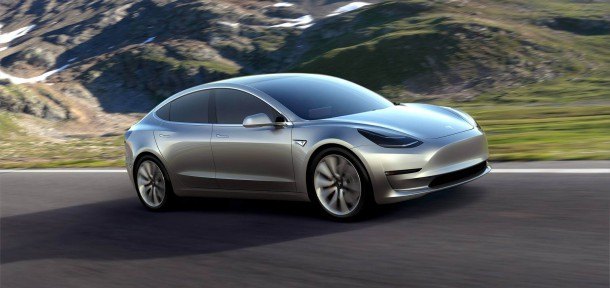Convenience Stores and Fast Food Restaurants Are Tesla's Next Frontier

Eager to find locations to expand its U.S. recharging network, Tesla Motors is busy seeking new partners, with fast food, gas stations and convenience stores being top of mind.
One of the chains Tesla is attempting to seduce is the jack-of-all-trades Sheetz, according to the Washington Post. With hundreds of locations in the mid-Atlantic region, Appalachia and Ohio, Sheetz — maker of the Shmuffinz breakfast sandwich — operates a gas bar, convenience store and fast food restaurant at its locations.
It’s the place to be, and Tesla wants a Supercharger on that property.
“We’ve had discussions with them about putting their chargers in our stores,” Michael Lorenz, Sheetz’s executive vice president of petroleum supply, told the Washington Post. “We haven’t done anything yet, but we’re continuing those discussions.”
We’ve got dinner covered tonight pic.twitter.com/Ru3Q4P46al
— Sheetz (@sheetz) June 28, 2016
Tesla stated that it wants to partner with private businesses like restaurants and hotels — anywhere people congregate (and could use a battery top-up) — to boost the convenience of owning one of its vehicles. Electric vehicles sales are sluggish, but a combination of lower prices, better range, and improved recharging infrastructure is seen as a cure for tepid public interest.
With volume ramping up (to 500,000 units per year by 2018, Tesla claims), the automaker needs to make ownership as easy as possible. Plunking down Superchargers in population-dense areas of the U.S. helps the automaker’s business model — Tesla doesn’t need to purchase land, owners won’t be far from a station, and potential buyers won’t be put off by a lack of infrastructure.
Tesla’s Supercharger network currently numbers 655 stations (worldwide), with 3,966 hookup points. The lower-priced Model 3 starts finding homes in late 2017, and the 215-mile range EV needs its juice, especially if it’s bound for a single-car household.
Chains like Sheetz make sense for the automaker, because drivers would spend more time at those location than, say, a conventional gas station. No one wants to wait in their car for half an hour, and station owners don’t want a parked vehicle taking up space on their limited footprint, consuming a product that doesn’t make them money.
A Supercharger adds 170 miles of range to a Tesla’s battery in 30 minutes — enough time for a driver to use the washroom, buy a magazine, order and eat a Schmuffinz breakfast, and use the bathroom again.
[Image: Tesla Motors]

More by Steph Willems
Latest Car Reviews
Read moreLatest Product Reviews
Read moreRecent Comments
- TheEndlessEnigma Not only do I not care about the move, I do not care about GM....gm...or whatever it calls itself.
- Redapple2 As stated above, gm now is not the GM of old. They say it themselves without realizing it. New logo: GM > gm. As much as I dislike my benefactor (gm spent ~ $200,000 on my BS and MS) I try to be fair, a smart business makes timely decisions based on the reality of the current (and future estimates) situation. The move is a good one.
- Dave M. After an 19-month wait, I finally got my Lariat hybrid in January. It's everything I expected and more for my $35k. The interior is more than adequate for my needs, and I greatly enjoy all the safety features present, which I didn't have on my "old" car (2013 Outback). It's solidly built, and I'm averaging 45-50 mpgs on my 30 mile daily commute (35-75 mph); I took my first road trip last weekend and averaged 35 mpgs at 75-80 mph. Wishes? Memory seats, ventilated seats, and Homelink. Overall I'm very pleased and impressed. It's my first American branded car in my 45 years of buying new cars. Usually I'm a J-VIN kind of guy....
- Shipwright off topic.I wonder if the truck in the picture has a skid plate to protect the battery because, judging by the scuff mark in the rock immediately behind the truck, it may dented.
- EBFlex This doesn’t bode well for the real Mustang. When you start slapping meaningless sticker packages it usually means it’s not going to be around long.


































Comments
Join the conversation
I've been suggesting that Tesla partner with the big convenience store chains and truck stops for a couple years now; they really are the best places to set up Supercharger stations. The stores/restaurants gain a near-guaranteed paying customer every time, compared to ICEV drivers who will more often pump 'n go rather than visit the store.
One thing to remember is that in the real world of EV driving, I find myself only topping up enough to make it to my destination with a safe margin. On a 100-mile one-way road trip, I'll stop for about 12 minutes (according to my records) or so to add some padding to the range. On a supercharger, that would only be 6 minutes. With the 800v chargers that are on the horizon, that's only a 3-minute splash and dash. If I don't need a full charge to make it to my destination, I'm not spending the extra time at the charger. One caveat is that I work on my laptop and catch up on email while I'm stopped, so sometimes I end up spending more time at a stop than needed finishing up email.